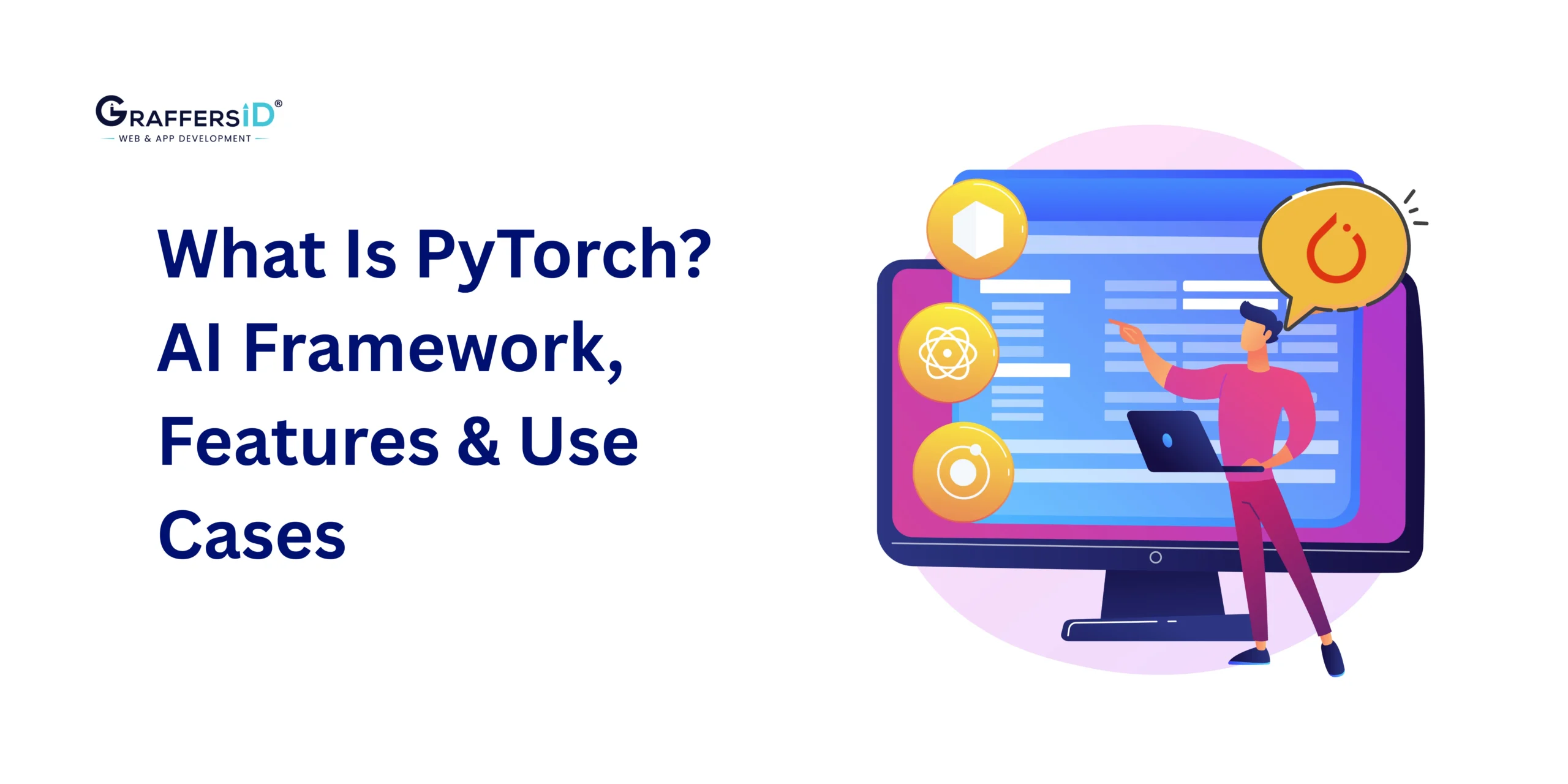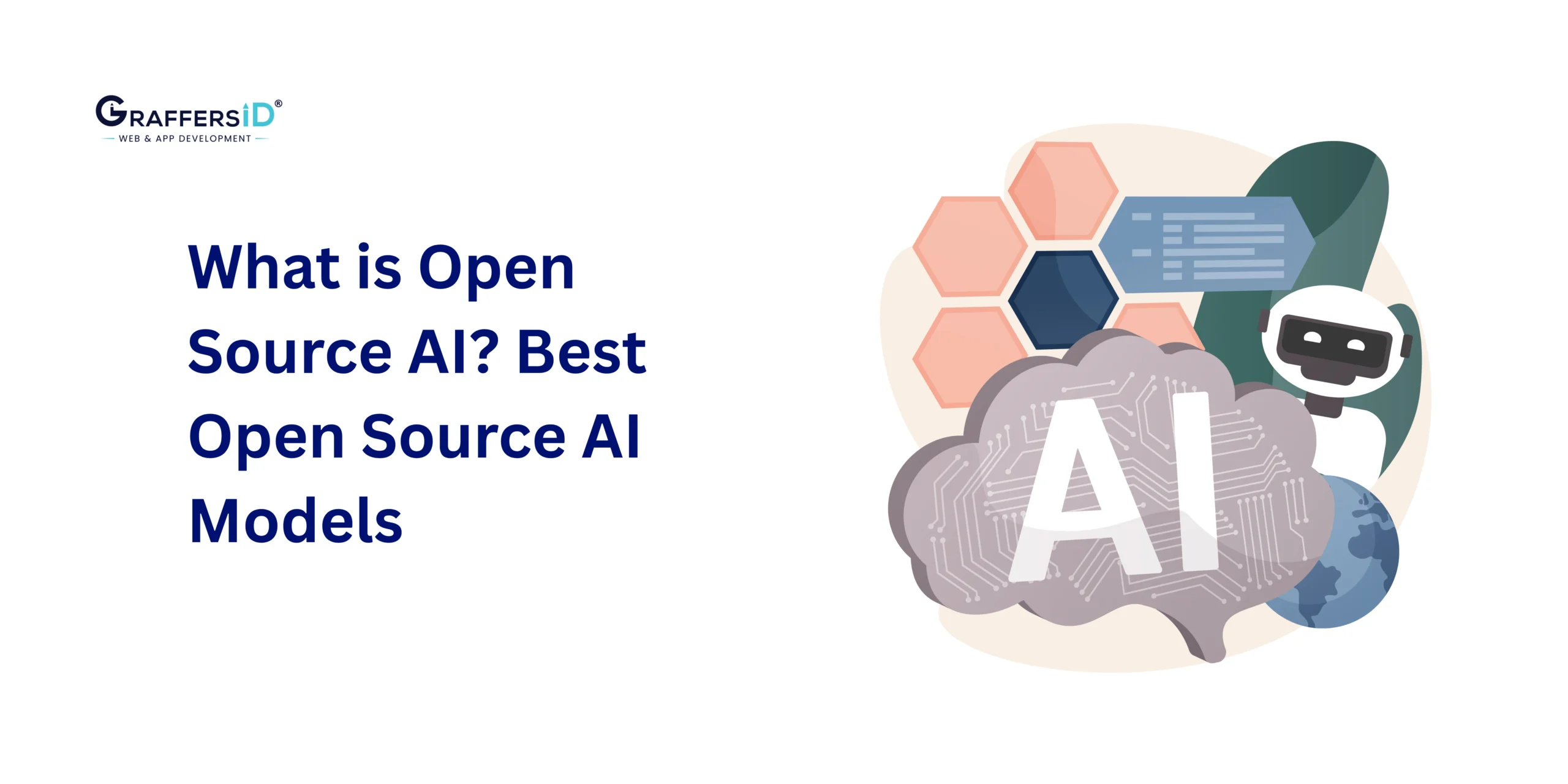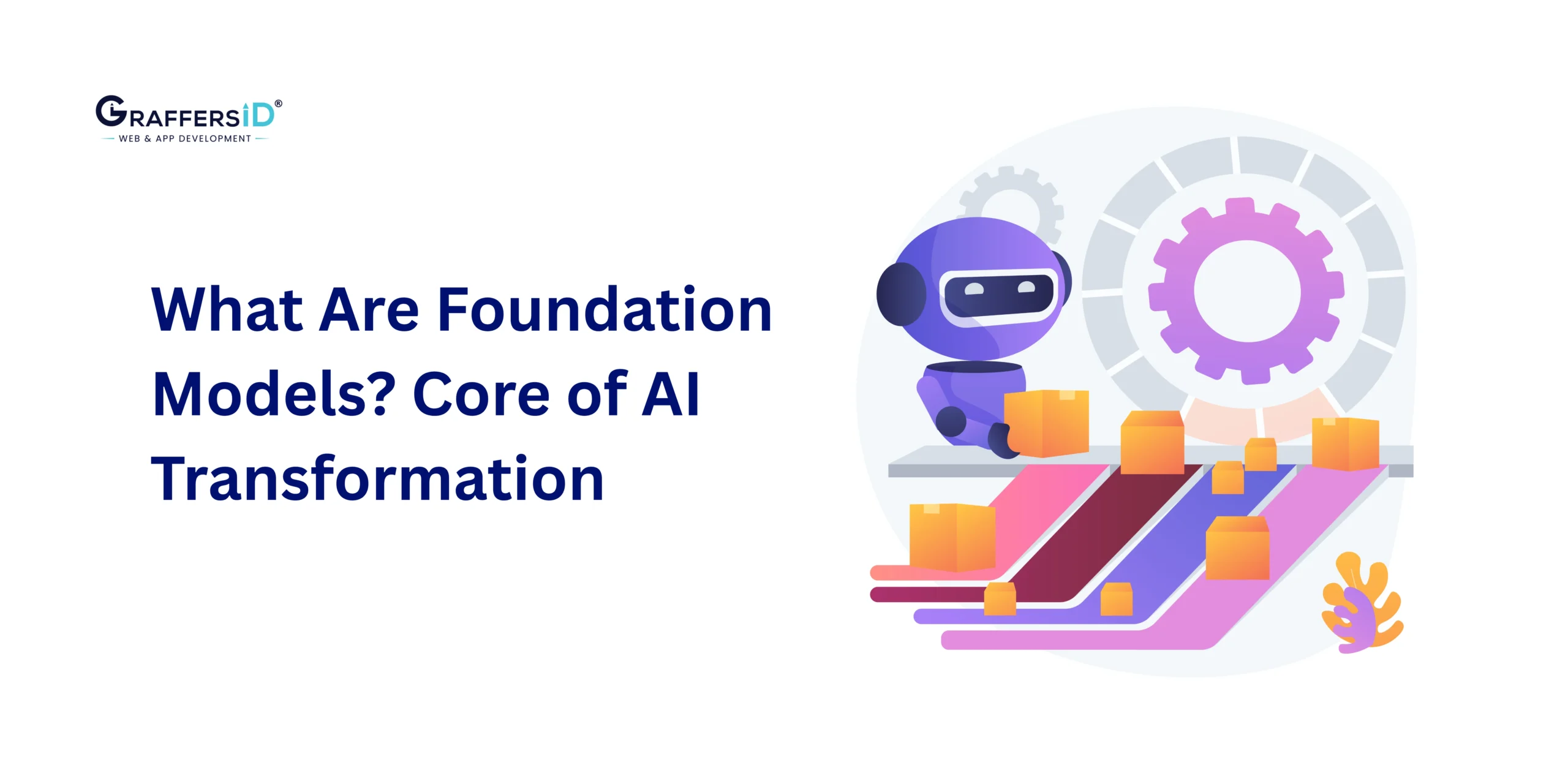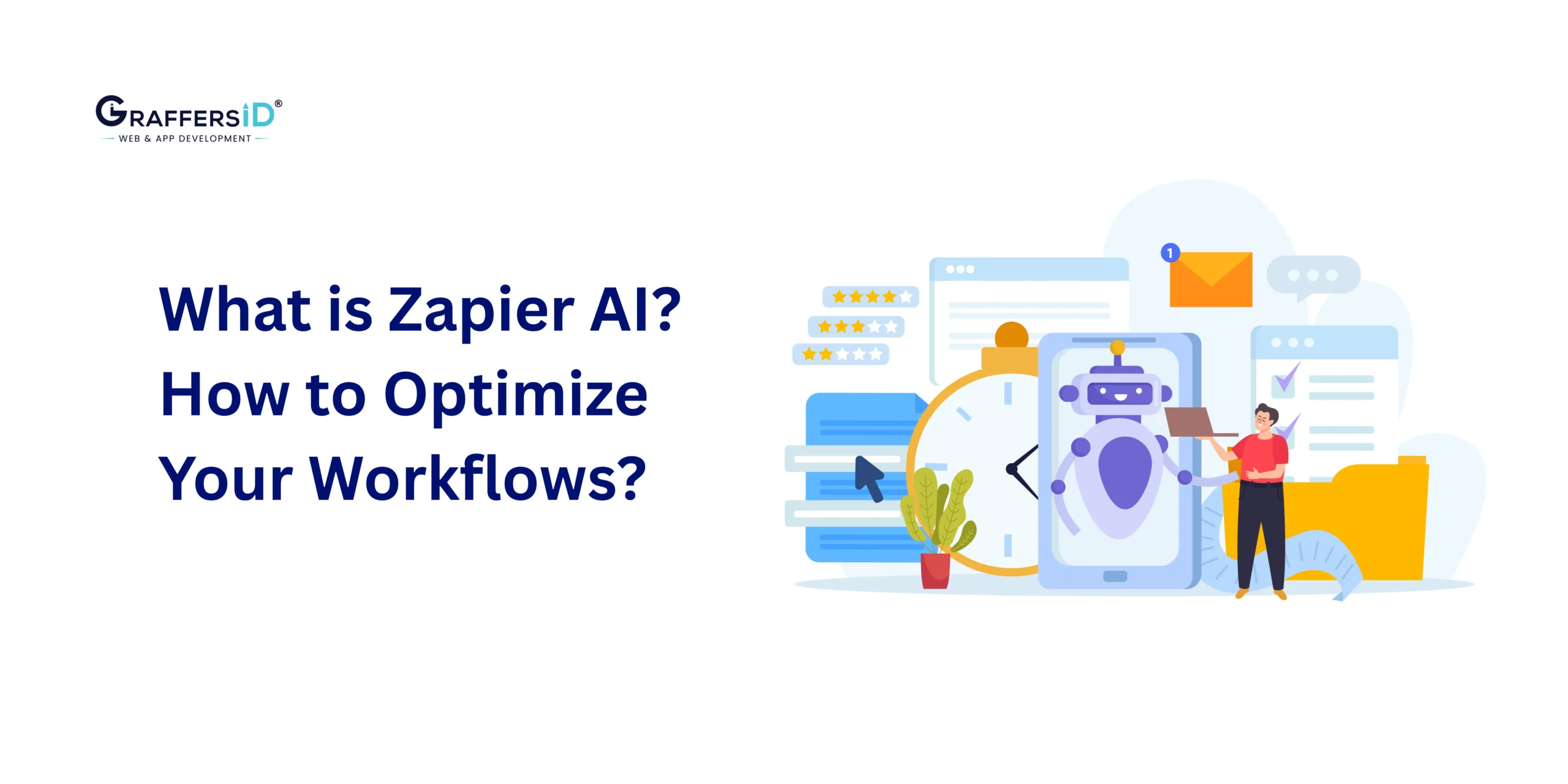In 2026, AI is no longer optional; it’s central to enterprise growth. From predictive analytics and workflow automation to autonomous systems and next-gen customer experiences, organizations rely on AI to gain a competitive advantage.
Building and deploying these AI solutions requires a framework that balances flexibility, speed, and production readiness. PyTorch has emerged as the go-to AI framework for enterprises, developers, and data scientists. Its Python integration, dynamic computation, and enterprise-grade tools make it ideal for rapid experimentation and large-scale AI deployment.
In this blog, we’ll explore what PyTorch is, its key features, enterprise use cases, and how organizations can adopt it to stay ahead in AI innovation.
What is PyTorch?
PyTorch is a leading open-source deep learning framework widely used for AI research and enterprise deployment. Unlike traditional frameworks, PyTorch combines dynamic computation graphs with production-ready capabilities, enabling faster iteration and scalable AI solutions.
Read More: What is Deep Learning in 2026? Key Models, Real-World Use Cases, Challenges & Future Trends
Key Components of PyTorch in 2026
-
Tensor Library: Handles multi-dimensional arrays with GPU acceleration for faster computation and large-scale model training.
-
Autograd: Provides automatic differentiation, simplifying gradient computation and model optimization.
-
Dynamic Computation Graphs: Supports flexible, on-the-fly model building and debugging without pre-compiling graphs, making iterative AI development faster.
-
Python Integration: Smooth integration with Python ensures intuitive development for data scientists, machine learning engineers, and AI teams.
PyTorch’s combination of flexibility, speed, and enterprise-ready capabilities makes it a top choice for organizations looking to deploy scalable AI solutions.
Key Features of PyTorch in 2026
PyTorch has evolved with enterprise-focused features that accelerate AI adoption:

-
TorchDynamo: A Python-level compiler introduced in PyTorch 2.0 for optimized model execution and faster training.
-
TorchServe: Enterprise-grade model serving tool that supports multi-model deployment, REST APIs, and scalable production environments.
-
MLIR Integration: Improves hardware portability and optimization for GPUs, TPUs, and specialized AI accelerators.
-
Enhanced GPU Support: Advanced memory management, parallelization, and compute optimization for large-scale AI models.
-
Next-Gen Model Compatibility: Supports LLMs, generative AI, and multimodal AI workflows.
Business Use Cases of PyTorch in 2026
Enterprises across industries leverage PyTorch for AI-driven innovation:

1. Healthcare
-
Medical Imaging: Advanced image reconstruction and diagnostics using PyTorch-enabled tools.
-
Drug Discovery: Predict molecular interactions and accelerate research pipelines.
2. Finance
-
Algorithmic Trading: Predictive modeling for market strategies.
-
Fraud Detection: Real-time detection of anomalies using deep learning.
3. Natural Language Processing (NLP)
-
Chatbots and Virtual Assistants: Build intelligent conversational AI to enhance customer interactions.
-
Sentiment Analysis: Analyze reviews, social media, and feedback to extract actionable business insights.
How Can Businesses Use PyTorch for AI in 2026?

- Define Business Objectives for AI Integration: Identify clear goals where AI can drive measurable impact, from automation and predictive analytics to enhanced customer experiences.
- Develop or Customize Models: Leverage PyTorch’s flexible framework to develop custom AI models tailored to your enterprise needs and industry-specific challenges.
- Optimize Performance: Accelerate training and inference by using the TorchDynamo compiler and advanced GPU optimizations for faster, cost-efficient AI performance.
- Deploy at Scale: Ensure enterprise-ready deployment with TorchServe, supporting multi-model serving, REST APIs, and smooth cloud integration.
- Monitor & Retrain Continuously: Track AI model performance in real-time, identify drift or inefficiencies, and retrain models to maintain accuracy and reliability.
Future of PyTorch: Key Trends for 2026 & Beyond
PyTorch continues to evolve as a top AI framework, offering enterprises cutting-edge tools to stay ahead in AI development. Key trends include:
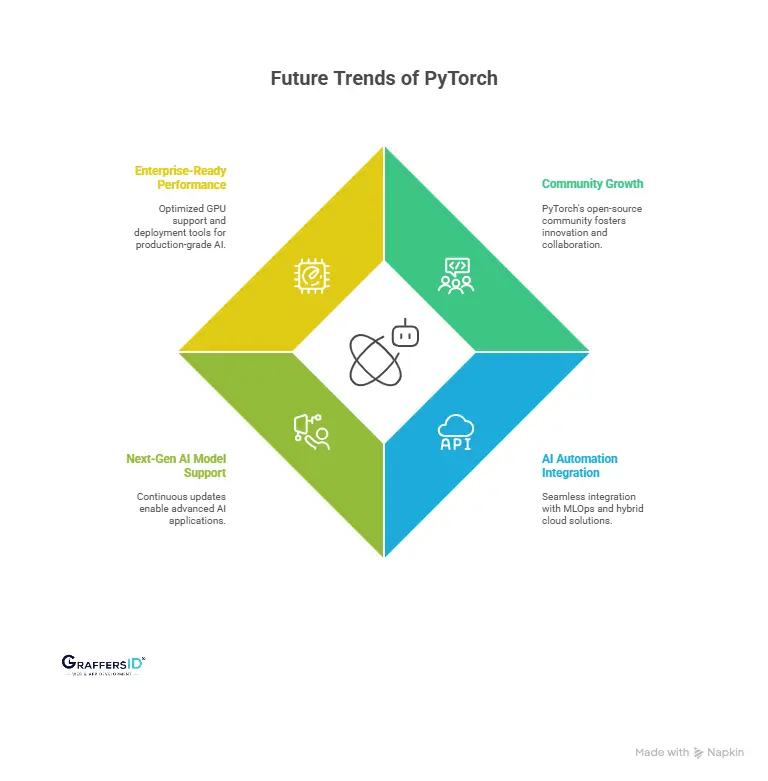
- Community Growth: Supported by the Linux Foundation, PyTorch’s open-source community accelerates innovation.
- AI Automation Integration: Seamless compatibility with MLOps and hybrid cloud solutions for enterprise AI workflows.
- Next-Gen AI Model Support: Continuous updates enable advanced LLMs, multimodal, and generative AI applications.
- Enterprise-Ready Performance: Optimized GPU support and deployment tools make PyTorch suitable for production-grade AI.
Conclusion: Why Enterprises Should Choose PyTorch in 2026
PyTorch combines research flexibility and enterprise-grade performance, making it a top choice for AI development in 2026. Enterprises using PyTorch can accelerate innovation, scale AI applications, and maintain a competitive advantage.
For decision-makers, understanding PyTorch’s capabilities and applications is critical to shaping a forward-looking AI strategy that delivers tangible business value.
At GraffersID, we help businesses hire expert AI developers and build custom AI solutions, from enterprise-grade models to scalable AI applications.
Partner with us to accelerate your AI journey in 2026 and beyond.
